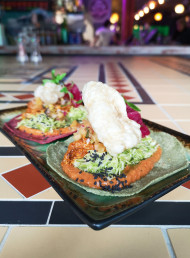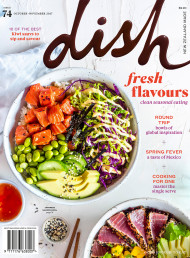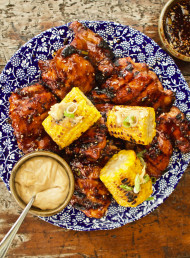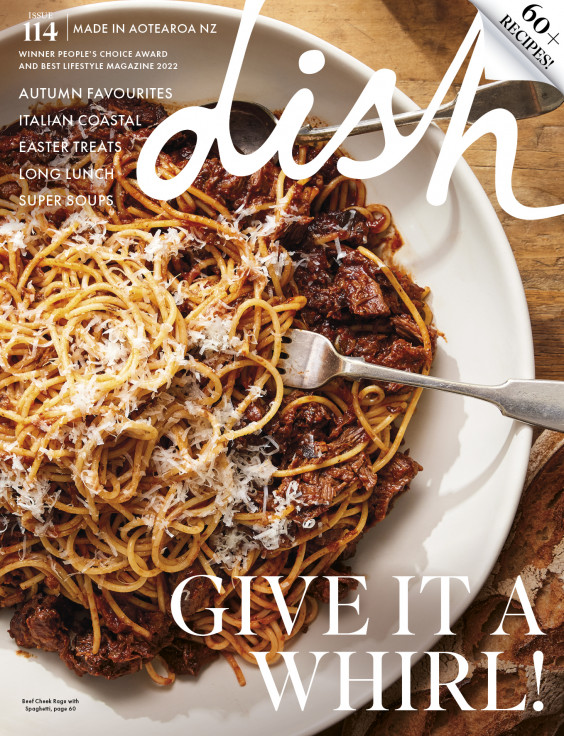Cook the Books – Mexico from the Inside Out
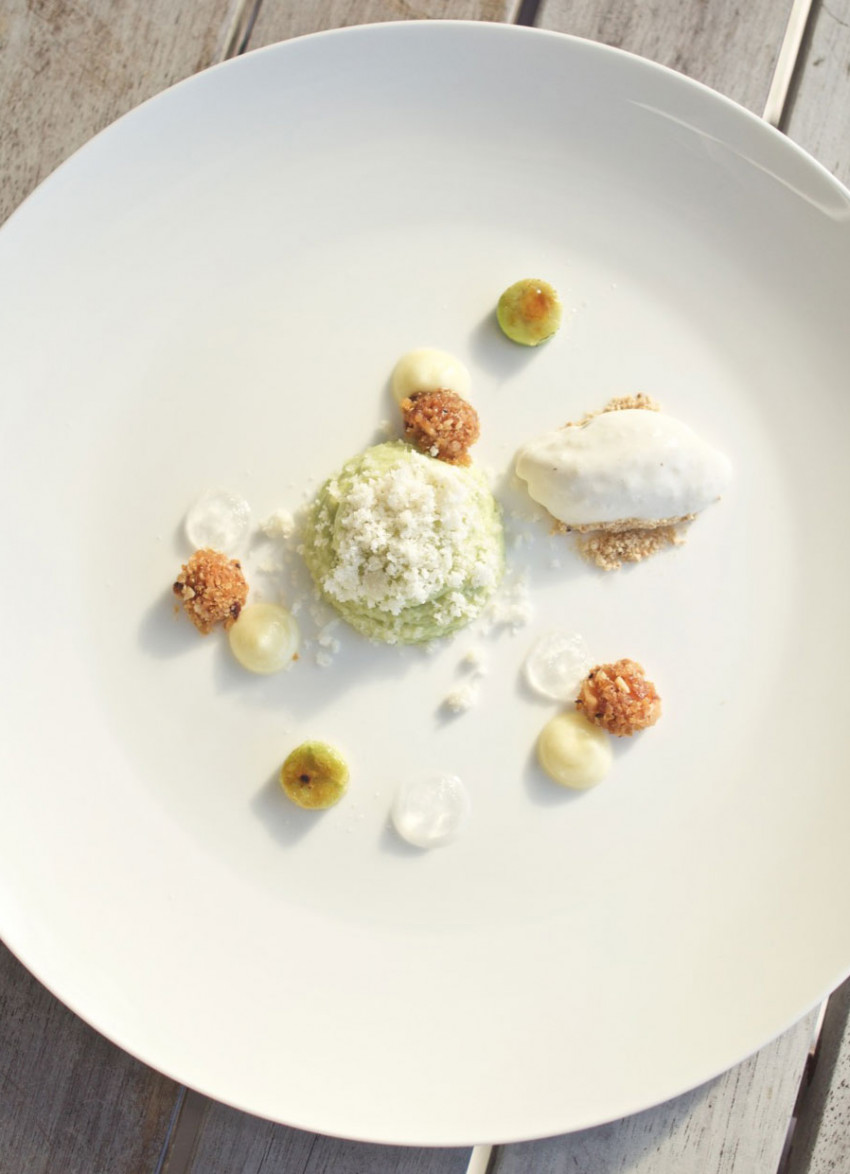
Our practical recipe book reviewer David Parker takes on the meticulous recipes of top Mexican chef Enrique Olvera as he reviews his new book, Mexico from the Inside Out.
Lately I've been enjoying the Vice/Munchies produced videos “Chef's Night Out”, where a chef takes a couple of their friends out, have them visit some of their favourite local restaurants and bars, over the course of the evening they get very drunk and then they end up back at their own restaurant late at night to cook some food. I noticed that recently they've been featuring quite a few fine dining Mexican restaurants – I had no idea Mexico had a fine dining scene. A brigade of chefs bent over a counter delicately placing micro herbs with tweezers and dripping dots of various sauces from bottles around a gigantic plate; its not really something you'd tend to associate with Mexican food. But it makes sense, essentially they're centring a tasting menu on Mexican flavours and ingredients, they are as deserving of a fine dining menu as any other food.
There's an episode of Chefs Night Out following chef Enrique Olvera, although he only makes it to one place before drunkenly putting together some quesadillas. Looking through the book I was struggling to find a recipe I could even be able to buy the ingredients for. I guess the key to a truly great restaurant is in the purchasing of ingredients and Pujol seems to take inspiration from traditional Mexican products. Most of these don't make their way here, not even to specialty Mexican stores. I decided to pick a recipe I could get most of the ingredients for and just go for it.
The recipe titled Avocado Cream appealed to me because it reminded me of something I made from the French Cafe book Saison, with its little drops of gel and creams and crumbles. Plus, I knew I could source most of the ingredients, except "Ocosingo Cheese"... After a bit of Googling I found "Quesa de Bola de Ocosingo" brought up a few more hits: it's a cheese made by nine makers in Ocosingo, a small city in the south of Mexico. I imagine actually sourcing it would be a bit like a Mexican chef trying to get a Dunedin-made cheese. Fortunately, after a lot of reading, I finally found someone who describes the texture like cream cheese. Philly it is then!
It was Friday night and I was almost in bed when I remembered I was supposed to make the coconut ice cream mix the night before serving. So I snuck back into the kitchen to quietly whip up the ice cream. First I needed to crack open two young coconuts, not a quiet task so I ventured out into the night, torch in mouth, knife in hand to the concrete slab where a garage once was.

After successfully opening the coconuts I scooped out their flesh and added it to the rest of the ingredients and brought up to a boil. I wasn't convinced with the fresh coconut pulp so I decided to blend it for good measure and carefully sunk the stick blender into the mix on its lowest speed (wincing the whole time for fear of waking someone). Then I transferred it to a bowl, put it in the fridge and crawled into bed.
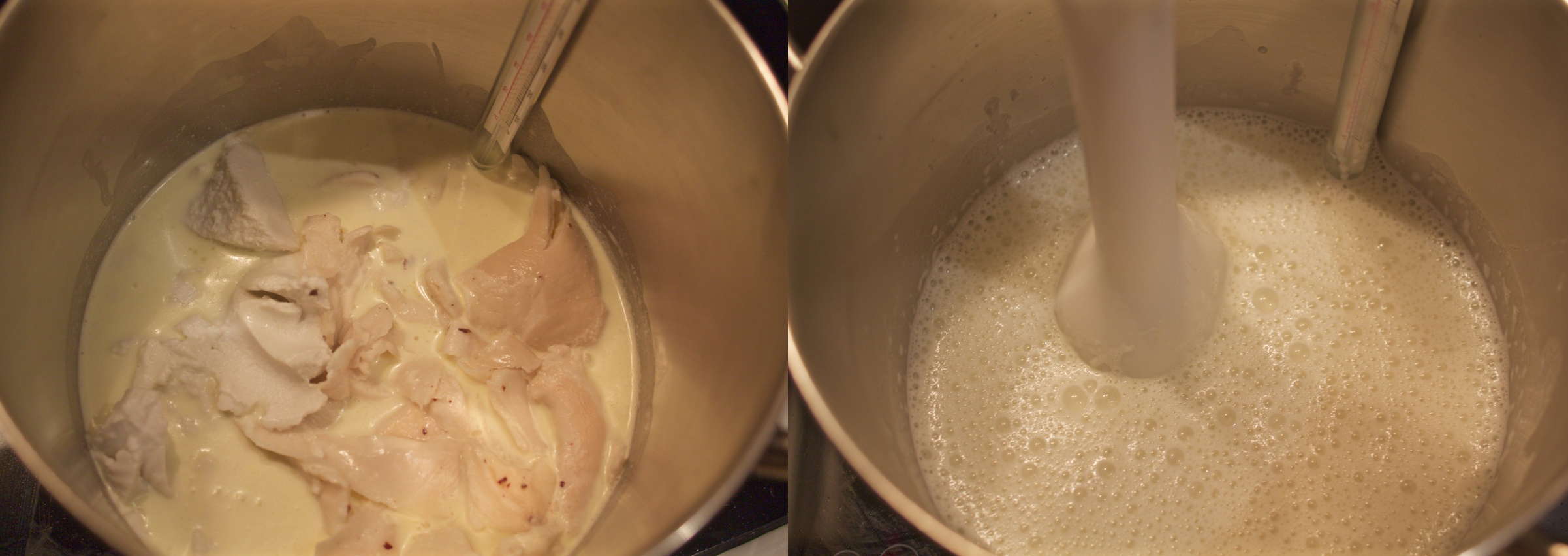
The next day I started on the coconut gel – I had saved the coconut water from the coconuts the night before and now boiled it with the agar agar (I found agar agar recently when I was browsing an Asian supermarket) and sugar then instead of lining a baking tray with clingfilm, which seemed like a bit of a faff, I poured the mixture into a plastic container and left to cool.
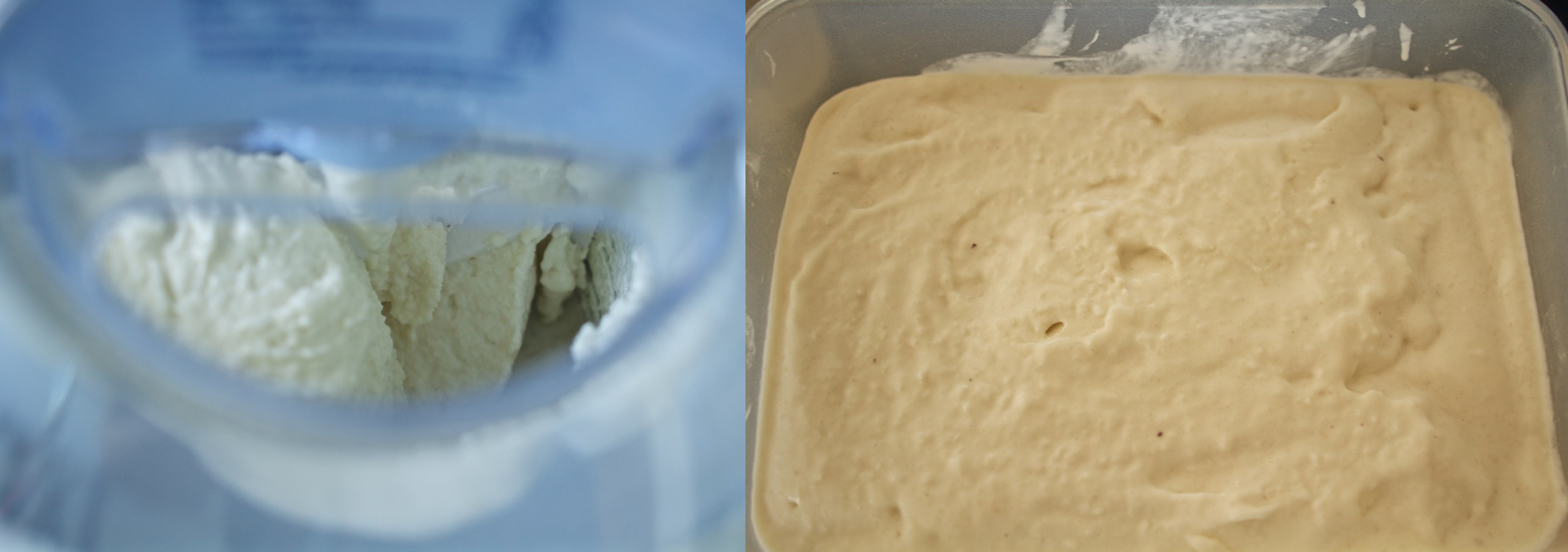
Then I made the crumble by rubbing together flour, cornflour, butter, and sugar with my fingers. I spread the mixture on a baking tray and baked until golden. I tasted some of the crumble at this point and it was not very nice, kinda tasted like raw flour despite definitely being cooked. I was a little worried!
Then I candied the macadamias by heating them with sugar and water in a saucepan until the sugar caramelised. I think I let the caramel go a bit too far, taking time to take a photo of the process, but it was still fine. When the macadamias and caramelised sugar had cooled I chopped it finely, this took quite a bit of time but I got there in the end.

By this time the coconut gel had cooled and solidified – it was very thick. I blended it and poured the jel into a squeezy bottle for ease of serving later. For the avocado cream, I blended together an avocado, cream cheese, icing sugar and citric acid in the food processor. Then I folded in the whipped cream and transferred it to a piping bag. It was so easy and really delicious.

Earlier, I had started churning the coconut ice cream in the ice cream maker I had borrowed for the Gelato Messina book review... Maybe I do need an ice cream maker? Anyway, it was done churning so I transferred it to a tub and left it to harden in the freezer a bit.

For the lime cream, I thought I'd use my stand mixer but it's such a pathetic amount of cream that my whisk attachment barely reached down to whisk it, so having added the lime juice and icing sugar I whisked it by hand – only took a minute or so.
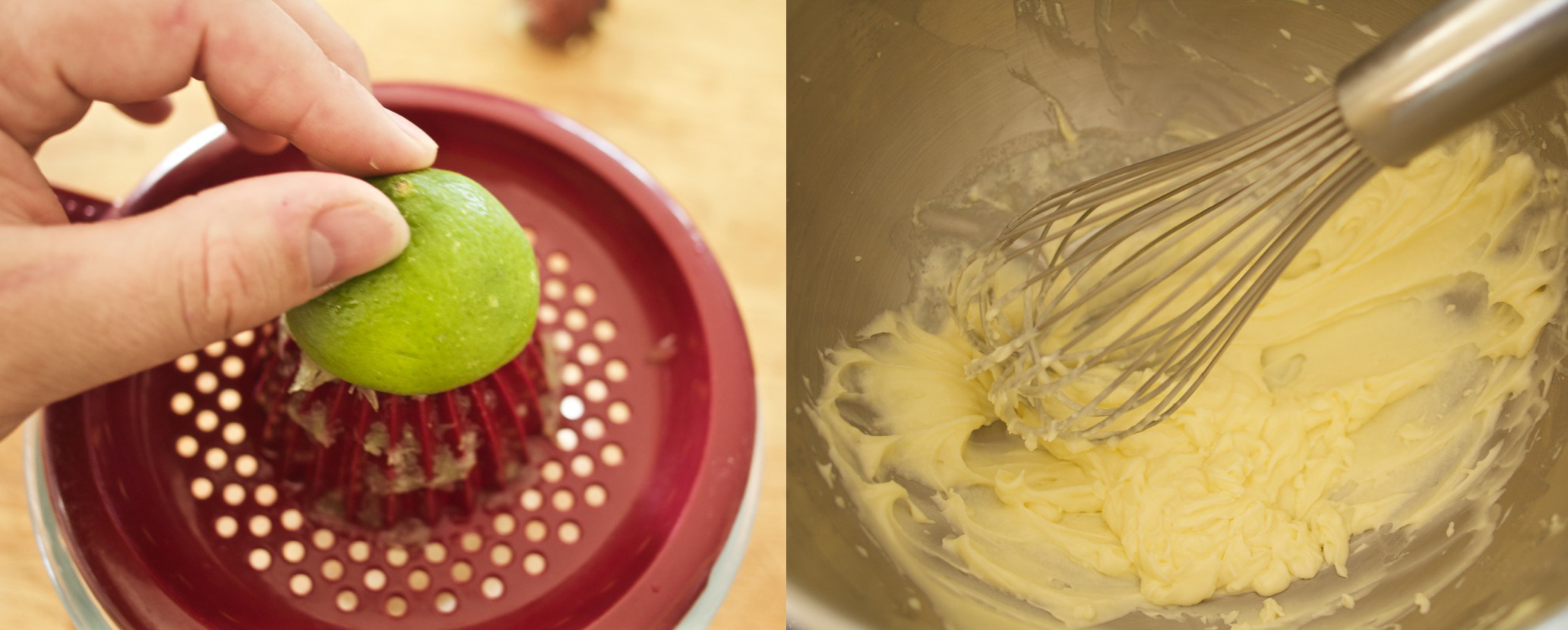
To get ready for plating up, I grated a couple of macadamias. There is also what looks like the leaf of a herb in the photo in the book but I couldn't work out what it was and it wasn't listed in the ingredients. I was about ready to start plating up, first the avocado cream (topped with grated macadamia in the centre) followed by drops of the lime cream and coconut gel. I found a very little round spoon and used it as a mould to push the finely chopped candied macadamias into and then placed them on the plate.
Then I could brûlée the avocado. I cut the avocado into thin slices and then using a little bit of pipe I cut circles of avocado, topped them with sugar and caramelised the sugar with a blowtorch before placing them on the plate.

I placed a spoon of the crumble on the plate where the coconut ice cream would go. Having watched a few YouTube videos on how to quenelle I attempted to form the ice cream into one. No such luck. I tried a couple of different shaped spoons and techniques, eventually I decided to form them with two spoons and carefully placed the quenelle atop the crumble. It was a blisteringly hot day, however, and between forming the quenelle and putting it on the plate it had already started to melt, by the time I got to take a photo of the plate it was a bit of a mess.
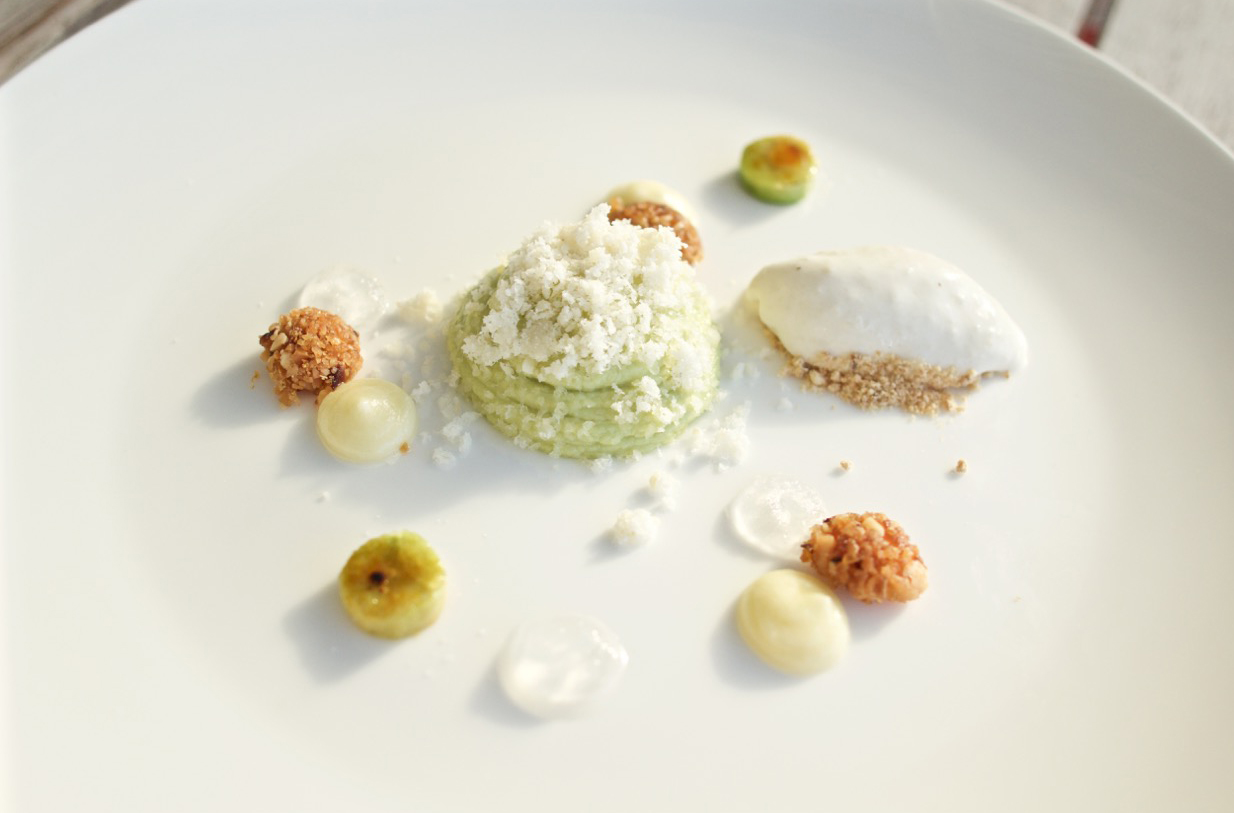
But how did it taste? Having tried the crumble and been sorely disappointed I was very anxious, I'd tried various elements as I was preparing them, some were great on their own, others not so much. All together they worked really well. The only element I was disappointed with was the coconut ice cream – the texture was really good but it was just a little bland and under sweetened, it verged on being savoury. I went back for seconds.
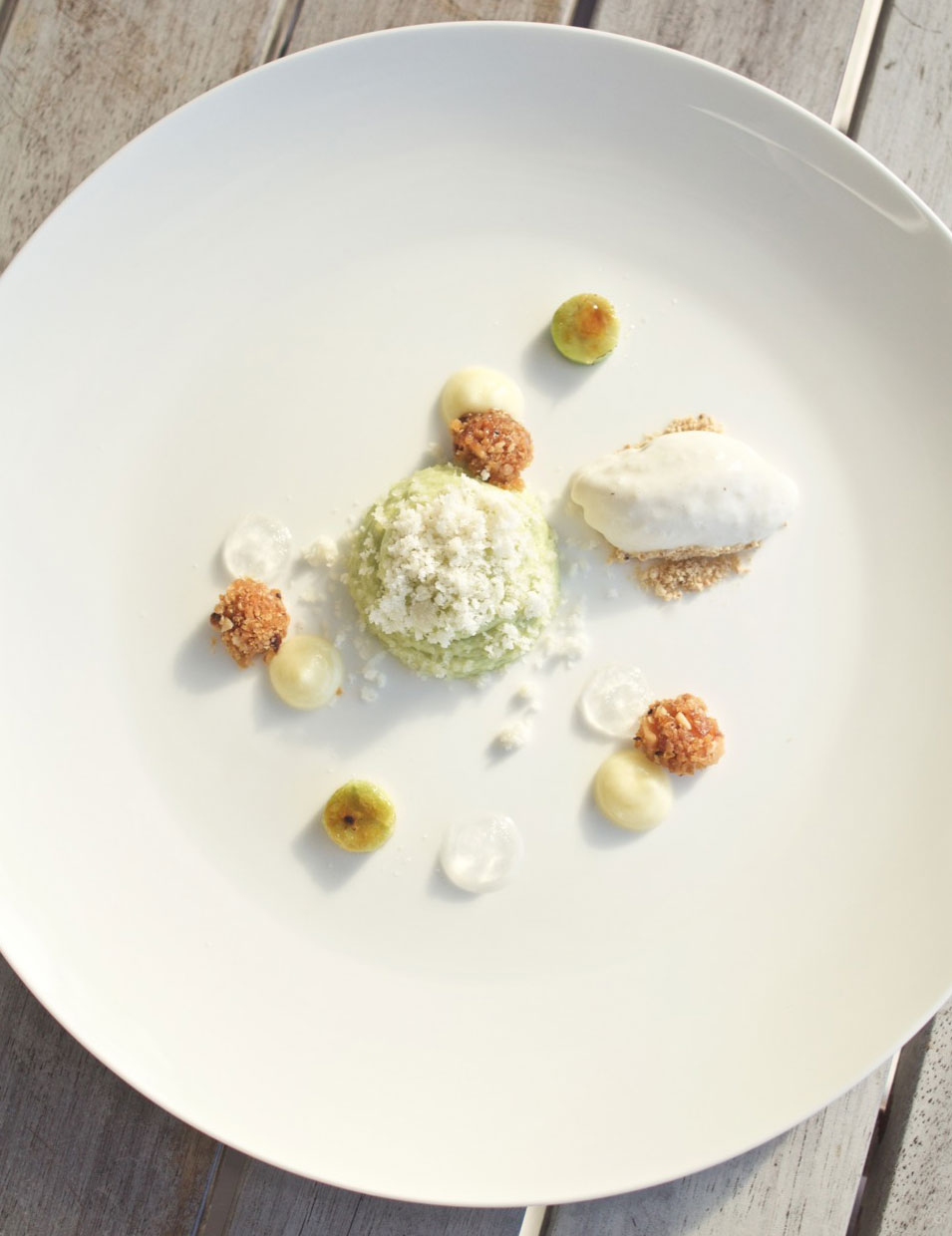
latest issue:
Issue #114
Autumn has arrived, and with it, the latest issue of dish, jam-packed with recipes that will have you fizzing to get in the kitchen! With a long Easter lunch featuring perfectly pink, blushing roast leg of lamb and wildly decadent baked mashed potatoes with caramelised onions, to simply scrumptious chocolate treats and sensational seasonal baking this issue has you covered - we reckon the Hot Cross Buns are our best yet! Salads make way for soothing soups, pies, puddings and our cover star beef cheek ragù with spaghetti – a must-make dinner for family and friends. With over 60 recipes in our latest issue there’s plenty of inspiration to keep you busy – and well-fed! Don’t forget to share your dish dishes with our Facebook community.

